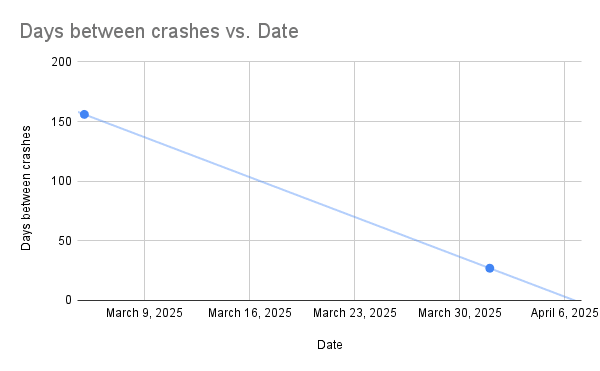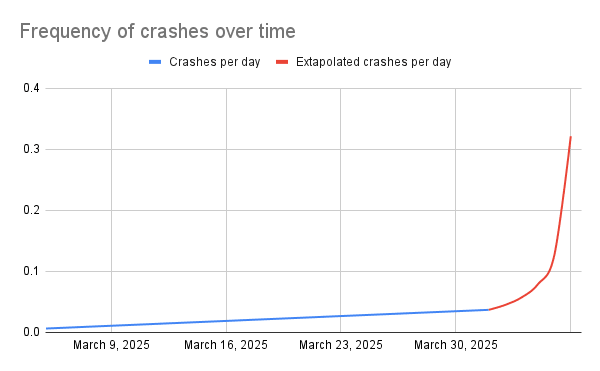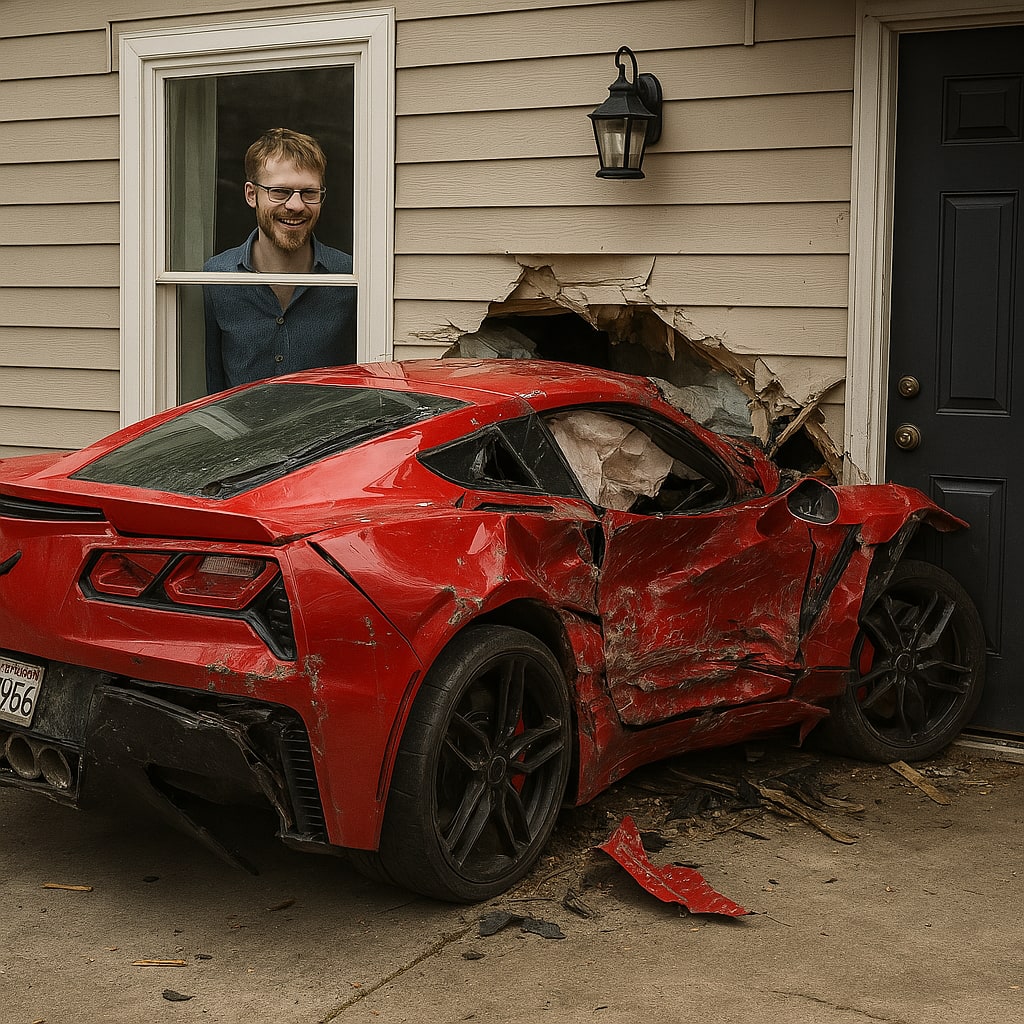You will crash your car in front of my house within the next week
post by Richard Korzekwa (Grothor) · 2025-04-01T21:43:21.472Z · LW · GW · 6 commentsContents
6 comments
I'm not writing this to alarm anyone, but it would be irresponsible not to report on something this important. On current trends, every car will be crashed in front of my house within the next week. Here's the data:

Until today, only two cars had crashed in front of my house, several months apart, during the 15 months I have lived here. But a few hours ago it happened again, mere weeks from the previous crash. This graph may look harmless enough, but now consider the frequency of crashes this implies over time:

The car crash singularity will occur in the early morning hours of Monday, April 7. As crash frequency approaches infinity, every car will be involved. You might be thinking that the same car could be involved in multiple crashes. This is true! But the same car can only withstand a finite number of crashes before it is no longer able to move. It follows that every car will be involved in at least one crash. And who do you think will be driving your car?
6 comments
Comments sorted by top scores.
comment by Jon Garcia · 2025-04-02T05:00:53.505Z · LW(p) · GW(p)
See, this is what happens when you extrapolate data points linearly into the future. You get totally unrealistic predictions. It's important to remember the physical constraints on whatever trend you're trying to extrapolate. Importantly for this issue, you need to remember that time between successive crashes can never be negative, so it is inappropriate to model intervals with a straight line that crosses the time axis on April 7.
Instead, with so few data points, a more realistic model would take a log-transform of the inter-crash interval before fitting the prediction line. In fact, once you do so, it becomes clear that this is a geometric series, with inter-crash interval decaying exponentially with number of crashes. The total time taken for N cars to crash in front of your house after the first one grows as , where and days, based on your graph.
According to Google, there are 1.47 billion cars in the world. The time it will take for all of them to crash in front of your house is days from the first crash, which works out to 5.7 days from today. Which turns out to be April 7.
Hmm...
Well, see you on Monday, I guess.
comment by Ruby · 2025-04-02T01:31:13.496Z · LW(p) · GW(p)
Frick. Happened to me already.
↑ comment by Richard Korzekwa (Grothor) · 2025-04-02T01:39:03.755Z · LW(p) · GW(p)
Another victory for trend extrapolation!
Replies from: Rubycomment by Seth Herd · 2025-04-02T05:53:02.261Z · LW(p) · GW(p)
I accept your statistics and assume I'll be driving my car. Damn.
OTOH, I can be pretty certain I won't die or be seriously injured.
That has happened never in my thousands of weeks, so statistically, it almost certainly won't within the next week!
comment by Mars_Will_Be_Ours · 2025-04-02T01:50:40.597Z · LW(p) · GW(p)
Quick! Someone fund my steel production startup before its too late! My business model is to place a steel foundry under your house to collect the exponentially growing amount of cars crashing into it!
Imagine how much money we can make by revolutionizing metal production during the car crash singularity! Think of the money! Think of the Money! Think of the Money!!!
